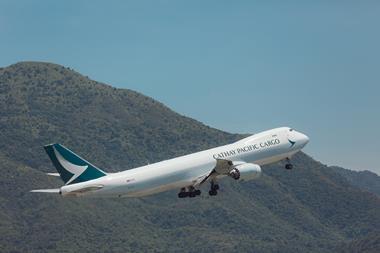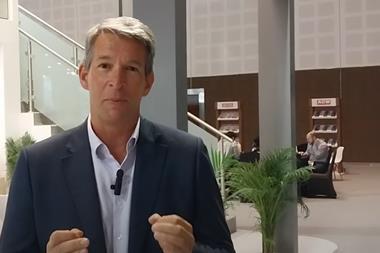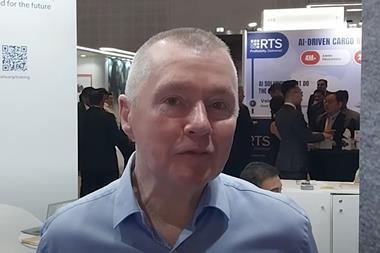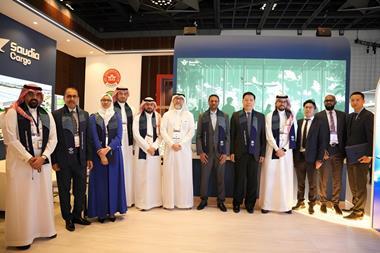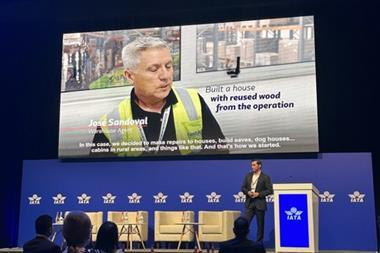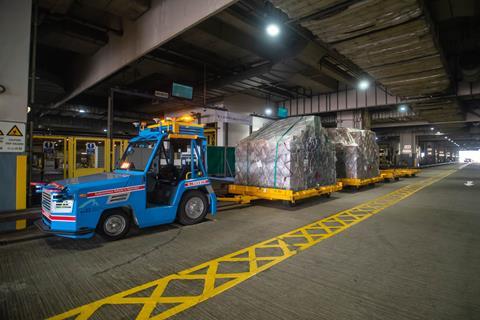
Cargo handler Cathay Cargo Terminal, a wholly owned subsidiary of the Cathay Pacific Airways and located at Hong Kong International Airport (HKIA), has completed an intensive trial of an Autonomous Electric Tractor (AET) at HKIA.
The trial involved a fully autonomous electric tow-tractor pulling four cargo dollies into the Cathay Cargo Terminal and then driving itself to the correct cargo transfer gate for loading.
After loading, the AET drove itself out of the terminal and across HKIA to the furthest cargo apron, the West Cargo Apron (WCA), delivering the cargo ready to be loaded directly onto a Cathay Cargo flight.
A precise docking process enables the AET’s towing dolly chains to automatically align with the transfer deck for seamless ULD loading.
A security feature also sees the AET to be digitally checked into and out of the terminal.
The project is a collaborative effort between Cathay Cargo Terminal, Airport Authority Hong Kong (operator of HKIA), and UISEE, a Chinese autonomous driving technology specialist.
Cathay Cargo Terminal chief operating officer Mark Watts enthused: “This has been an important proof-of-concept to show that AETs are capable of more advanced workflows than we have seen so far for cargo, reducing manual processes and significantly enhancing operational efficiency.
“This also improves overall cargo flow at the world’s busiest cargo hub and significantly reduces carbon emissions associated with traditional ground service equipment.”
Airport Authority Hong Kong acting deputy director, airport operations, Wing Yeung added: “This new milestone reinforces HKIA’s leadership in smart logistics and sustainable aviation development, paving the way for further advancements in autonomous vehicle solutions in cargo handling.
“The successful deployment of AETs in end-to-end cargo operations reflects the HKIA community’s continuous efforts in the adoption of smart airport initiatives and to reinforce the airport’s position as a global aviation hub.”
HVO technology
As well as the ongoing trials with AETs, Cathay Cargo Terminal is also piloting the use of hydrotreated vegetable oil (HVO) to power its non-electric cargo tractors. HVO is a renewable alternative to fossil-based diesel, facilitating the reduction of lifecycle carbon emissions by up to 80-90%, it has been said.
In mid-March, it was confirmed that Cathay Cargo Terminal and Hong Kong Airport Services Limited (HAS by Cathay) had jointly commenced piloting the use of HVO as an alternative fuel for ground support equipment (GSE), although Watts advised: “HVO is a very important step, but continued electrification is the ultimate vision to help us reduce carbon emissions and pursue Cathay’s digital and sustainability leadership.”
SeMS certification
In March, Cathay Cargo Terminal confirmed that it had become the first ground handler in Asia to achieve IATA’s Security Management System (SeMS) certification.
The SeMS programme provides a framework to manage regulatory compliance, security risks, threats, and vulnerabilities.
The handler said that it had achieved “operating status”, which is the highest possible tier for a first-time SeMS certification.
Cathay Cargo Terminal is to be presented with the formal SeMS certificate at a ceremony to take place during this week’s IATA World Cargo Symposium (WCS) in Dubai tomorrow (15 April).





